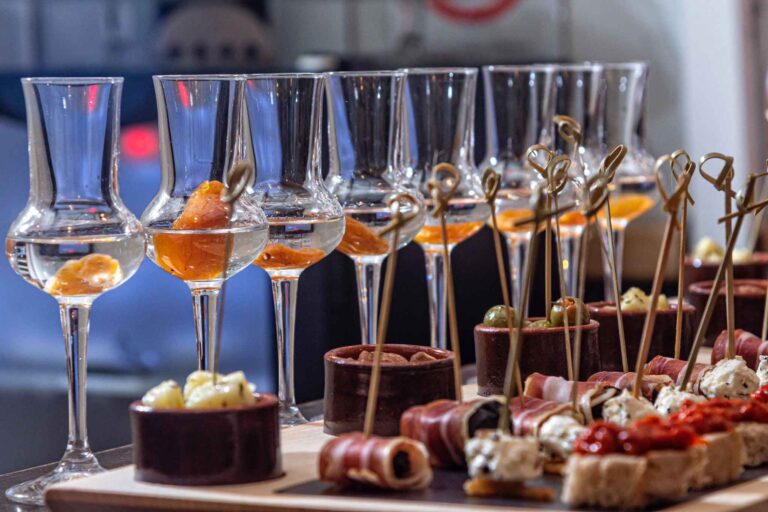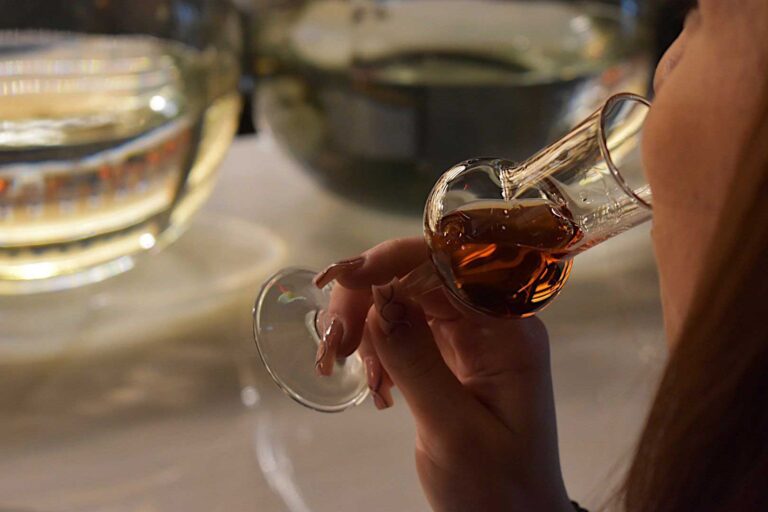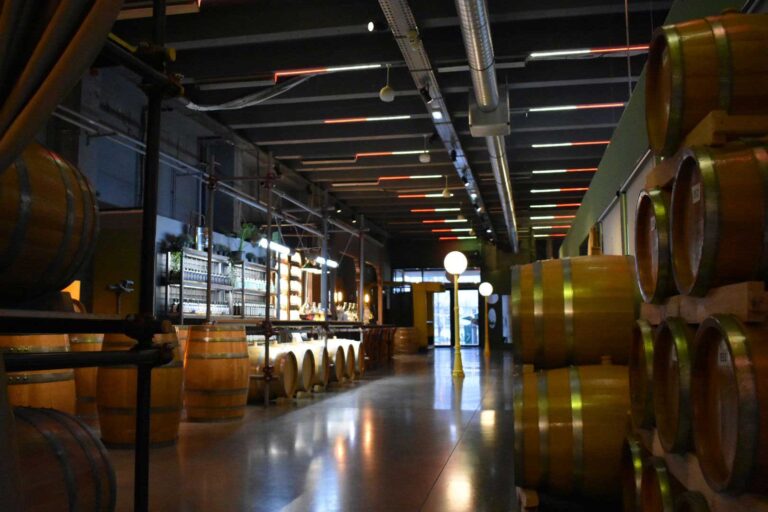Rakia, Serbia: What is it and how to drink rakia?
If you want to learn everything about rakia, Serbia’s most famous and important drink, which is consumed not only for its taste but also as part of culture and tradition, you are in the right place.
Whether you are a tourist or someone who has never tried rakia before, this article will help you understand what rakia is, how to drink it properly, and how to earn the respect of the locals when someone next offers you a glass and says: “Živeli!” (Cheers!)

Rakia, Serbian tradition, culture and way of life
Rakia is not just an alcoholic drink. In Serbia, rakia is a symbol of hospitality, tradition, pride, and identity. It is an inseparable part of everyday life. From casual gatherings with friends to the most formal events such as weddings, family celebrations (“slava”), and holidays. Almost every household in Serbia has at least one bottle of homemade rakia, usually given by relatives or friends who make it themselves, as having rakia on hand is considered an unwritten rule.
Origin and history of rakia
Rakia as a drink has deep roots in Balkan tradition. It is believed to have been first produced as early as the 14th century in the region of present day Serbia. At that time, distillation was a rare and complicated skill but quickly spread thanks to the favorable climate and abundance of fruit. From then until today, rakia has remained a faithful companion of the people in these lands.
In Serbian culture, it holds almost ritualistic significance. Homemade rakija is not consumed just to relax; it is drunk as a sign of respect, welcome, and celebration. When someone visits, the host usually offers rakija first. It is offered both in times of sorrow and joy. Rakija is present at the birth of a child and also when someone is being bid farewell for the last time.
Why is rakija so popular in Serbia?
There are several reasons. First, Serbia has a rich fruit growing tradition with a wide variety of plums, apricots, quinces, pears, and other fruits, which allows the production of high quality rakija. Also, rakija is part of the cultural identity and has been consumed in these lands for centuries.
How to drink rakija?
Many people wonder how to drink rakija properly, but before you take a sip, it is important to know the rule: clink glasses, look your companion in the eyes, and say “Živeli!” This is not just a rule but a sign of respect.
Rakia is most commonly consumed with plain or sparkling water to soften the strong alcohol and make the experience more pleasant. It is important to drink in moderation, as rakija can be extremely strong.

What kind of glass is rakija served in?
Traditionally, rakija is served in small glasses known as “čokanjčići”, holding about 30–50 ml. There is also a version served in tulip shaped glasses, which better retain the aroma of higher quality, aged rakija.
Should drink rakija “in one”?
It is not recommended. Good rakija is sipped slowly, in small gulps, to appreciate the full fruit flavor. Although some may occasionally drink it “in one” for fun or as a challenge, this is not how quality rakia is meant to be consumed.
Which food goes well with rakija?
Rakija is often paired with meze such as cured meats, cheese, and olives. It serves as an aperitif before meals to “open the appetite” and after meals to help “settle” the food. It pairs best with meat, but fruit rakijas also complement light salads and desserts.
Legal drinking age
In Serbia, as in most European countries, the legal minimum age for alcohol consumption is 18 years.
The difference between rakija, whiskey and vodka
Rakija, whiskey, and vodka are all distilled alcoholic beverages but differ in many ways:
- Rakija is made from fruit (most commonly plums, pears, apricots, etc.)
- Whiskey is made from grains (barley, wheat, rye) and is aged in wooden barrels, often for years.
- Vodka is made from grains or potatoes and is known for its neutral taste and high purity.
Rakija has a stronger fruity aroma and taste, while whiskey and vodka are much more neutral.
Brandy or rakija?
Although rakija is often translated as “brandy” in English, true connoisseurs know that “brandy” is not the same as rakija. Brandy is a broad term for distilled fruit spirits, but homemade rakija differs in its production process, the type of fruit used, and, of course, its distinctive taste.
How to make rakija and what are its types?
Production process
If you wonder how to make rakia, the process is not simple. Making rakia begins with harvesting ripe and healthy fruit. Then the fruit is washed, crushed, and left to ferment in large containers. The fermentation process lasts from 10 to 20 days, depending on temperature and the type of fruit.
After that, the mash is placed in a still and distilled. This process separates the alcohol from the rest of the mash, and the liquid that comes out of the still is raw rakia. The first and last fractions (“prvenac” and “patoka”) are often discarded because they contain undesirable substances.

Types of rakia
The most famous and valued type of rakia is:
- Šljivovica (Plum Rakia)
Made from plums, this is the most common representative of Serbian rakia. It can be young (clear) or aged (golden-yellow if matured in oak barrels).
Other popular types include:
- Lozovača – made from grapes, often mild and fruity.
- Dunjevača – made from quinces.
- Kruškovača – made from pears, especially the Williams variety.
- Kajsijevača – with a strong apricot aroma, highly prized.
Besides these popular varieties, rakia is also made from other fruits.
How is rakia stored?
Rakia is most commonly stored in oak barrels, where it can mature for years. Over time, it acquires a darker color, a smoother taste, and a more complex aroma. The minimum aging period for quality rakia is six months, often longer.
How much alcohol does rakia have?
Quality rakia contains between 40% and 45% alcohol by volume. Below 40%, it loses its characteristic strength, and above 50%, it may be too strong for consumption. Some homemade versions can reach up to 60% or more, but these are usually reserved for experienced drinkers and special occasions. It’s always recommended to check the label or ask the producer, especially when trying rakia from local or artisanal sources.
Should you feel a burn when drinking rakia?
Good rakia should not burn the throat excessively. Mild warmth is acceptable, but if it burns and leaves an unpleasant sensation, it is likely poorly distilled or too strong.
Best branded rakias in Serbia
Zarić – Kraljica (plum)
Aleksić (plum)
Tok – Dunja (quince)
Stara Sokolova (various fruit rakias)
Bosiljčić Ekselencija (plum)
Manastir Kovilj (plum, quince)
Stara Pesma (various fruit rakias)
Rakia as Medicine?
There is an old belief that rakia is a cure for everything, from pain to colds. In winter, mulled rakia (with sugar and spices), similar to mulled wine, is often prepared. Rakia is also used for massages, compresses, and even wound disinfection. Of course, this does not replace medical treatment, but the tradition remains.
Where you can buy rakia?
Rakia can be found in all supermarkets, but authentic homemade rakia are often purchased:
- Directly from producers
- At food and drink fairs
- In specialized stores for homemade products
- Online through local brands
Warning: Rakia is strong, drink responsibly!
Rakia is not a drink for excessive consumption. Its strength can quickly deceive, especially if consumed on an empty stomach. For the average person, two to three small glasses of rakia (0.03–0.05 liters) are enough to feel the effects of alcohol. More than that, without food or water, can cause serious intoxication.
Therefore, always drink in moderation, respect your body, and know when to stop. Rakia is meant to enhance moments, not cloud them
